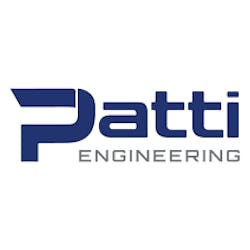Want more effective IIoT and automation? Collaborate with people
At its most basic, automation is supposed to reduce manual tasks, and the Industrial Internet of Things (IIoT) has been turbocharging many of those efforts. Ironically, this doesn’t mean eliminating human labor, and is more about refocusing people’s efforts on solving problems and adding value.
“IIoT is maturing. It’s solidly in the early-adopter phase, and starting to get into the majority-use phase,” says Sam Hoff, president and CEO at Patti Engineering, a CSIA-certified system integrator in Auburn Hills, Mich. “IIoT is all about connecting to the Internet, but that’s just the beginning.”
For instance, Hoff recently toured the Detroit Police Dept.’s real-time, crime-prevention center, which has 30 HMI screens handling input from 850 local businesses, which signed up to share data from video cameras and license plate readers. “Data scientists are using this information to help the police solve crimes. Police departments are doing more with less, so how can we do the same in manufacturing?” asks Hoff. “Many manufacturers are just beginning to bridge these islands and collect more data closer to real-time, which can improve overall equipment effectiveness (OEE), first-time capability, throughput and quality.”
Take a meeting—or two
To optimize these data-gathering efforts by a couple of automotive manufacturing clients, Hoff reports that Patti’s staff meets with them weekly or monthly to evaluate what they’re observing in their plants. These processes have all kinds of evolving data sources from vision systems to PLC programs, so it’s important to turn them on when data is likely to be needed, and turn them off when it isn’t likely to be needed. To help clients deal with intermittent errors from PLCs and mechanical devices, Patti developed an Ignition Edge web-based SCADA application from Inductive Automation, which can automatically collect more data about alerts and where they’re coming from, and identify root causes more with less manual labor.
“With Ignition, we can go back and see what the components and PLC were asking for, and identify culprits like stuck valves or other mechanical issues more easily,” explains Hoff. “This is different from regular modeling and simulation because digital twins can take real-time data, feed it into a real-time model, and see how adjustments will impact operations before any changes are made. For example, when a complex, powertrain line was running slow, we created digital twins of its six CNC machines and two robots. We then ran what-if scenarios to determine which change would deliver the most bang for their buck. We found that modifying part of the carrier to handle four engine blocks instead of two was more cost-effective than other ideas, such as adding more axes to the robots, which were also way more costly and time-consuming.”
Headaches point the way
Because IIoT and its related tools can provide new ways of solving old problems, Hoff adds that potential users should begin with the biggest headaches they’d like to address in their processes and facilities. This will help them build the requirements to guide them toward IIoT solutions that will be the most useful for them
“In the past five years, we’ve become more consultative. As system integrators, much of what we and others do is still in that old business model, whether we’re programming PLCs, designing electronic and hardware, or laying out panels,” explains Hoff. “However, we’re also doing more industrial engineering that focuses on throughput, quality, processes and removing bottlenecks. We’re looking at mechanical systems, but we’re also determining the best ways to get information off of plant-floors, and what to do with it afterwards. It’s ideal to process some data at the edge, while more historical information can be stored in the cloud, Data in clouds should be kept in an open database format where analysts can use Power BI or similar software can do periodic analyses.”
If edge computing or an on-premises cloud is employed, Hoff adds that an edge-management system should also be used, such as Siemens Industrial Edge or software from Zededa that can manage and monitor the health and performance of all plant-floor PCs running edge software. “Edge management also lets users create apps they can deliver to edge PCs without physically visiting them,” says Hoff. “To maintain security, we’re also using Tosibox software and mGuard components from Phoenix Contact.”
IIoT up close
This article is part of Control's 2023 IIoT mini-series. Read the others here.
About the Author

Leaders relevant to this article:

